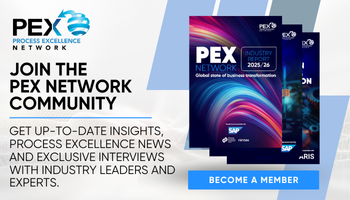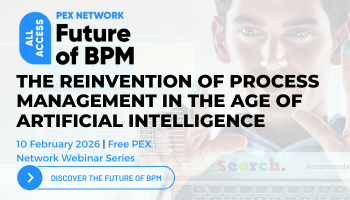Microsoft announces digital twin builder for Fabric
Capability simplifies the creation and management of data-driven digital twins at scale
Add bookmark
Microsoft announced the preview of the digital twin builder in Microsoft Fabric Real-Time Intelligence, a new capability designed to help organizations bridge their physical and digital worlds to create an artificial intelligence (AI) ready foundation for their operations.
Revealed at Microsoft Build, the builder simplifies the creation and management of data-driven digital twins at scale, enabling users to understand system-wide connections and create unparalleled insights and operational efficiency, according to Microsoft.
Digital twin builder in Microsoft Fabric Real-Time Intelligence helps bridge the gap between operational technology (OT) and IT, enabling real-time insights across design, production and supply chain systems, the tech giant added.
Businesses are increasingly investing in digital twin technology to create virtual replicas of physical and/or logical entities, whether they are physical assets like machinery, logical entities like customers or dynamic processes like manufacturing and logistics. Digital twins are becoming an integral component of modern process excellence.
Join the PEX Network community

Don't miss any news, updates or insider tips from PEX Network by getting them delivered to your inbox. Sign up to our newsletter and join our community of experts.
Learn MoreDigital twin builder for Fabric democratizes and scales digital twin scenarios
Microsoft’s digital twin builder democratizes and scales digital twin scenarios by making them more accessible and actionable for operators and decision-makers, Microsoft stated in a blog post. It equips users with low-code/no-code experiences to build and model digital twins.
Digital twin builder capabilities include:
- Modeling: Users can build shared vocabulary and structure to create comprehensive digital replicas of real-world entities, processes and environments.
- Mapping: Harmonizes diverse data sources into an ontology layer that connects digital twins with their real-world counterparts, ensuring accurate representation.
- Relationships: Enriches digital twins with semantic relationships and dependencies, reflecting real-world context.
- Extensions: Enables advanced analytics, visualization and AI/machine learning use cases for deep insights and predictive capabilities.
Digital twin builder is a native capability of Microsoft Fabric, leveraging its scalability and unified security model. It also leverages out-of-the-box Microsoft Fabric data connectors to ingest data from a wide variety of data sources including data flowing from real-world signals.
CSX uses digital twin builder to improve operational decision-making and fuel efficiency insights
During the private preview phase, Microsoft worked with early adopters who have already begun reaping the benefits of digital twin builder. “CSX aims to leverage digital twin builder to develop a dynamic operations ontology and to leverage that ontology to enhance the accuracy of fuel burn predictions for different train routes,” said Chandrashis Bhowmick, senior information architect at CSX Corporation.
Since both locomotives and train lines exhibit rapidly evolving relationships at the entity instance level, a traditional database approach struggles to capture these dynamic interactions efficiently, Bhowmick added. By implementing an ontology inside digital twin builder, CSX unified critical metadata – such as locomotive specifications (cargo type, weight, etc.) and train line attributes (starting point, endpoints, stations, etc.) – into a cohesive framework.
“This structured knowledge base then is planned to be used for natural language querying (with and without reason) and for input into machine learning model, improving operational decision-making and fuel efficiency insights,” Bhowmick said.
Join us at All Access: AI in Business Transformation 2025!
Digital twins have multi-function use cases for industrial organizations
Digital twins deliver value for industrial organizations across an array of multi-function use cases, Microsoft stated.
In energy management, digital twins assist industrial organizations in improving energy management through a data ontology framework. “By modelling assets like turbines, compressors and substations as digital twins and training AI agents on these data parameters, industrial organizations can achieve real-time monitoring, predictive maintenance and energy flow optimization across complex operations.”
In manufacturing, aggregated data and digital twins of machines and processes support the discovery of insights as well as running what-if scenarios for production engineers to use in root cause analysis, enhancing efficiency, utilization and quality and waste reduction.
In supply chain, digital twins can serve as a powerful platform for data by unifying fragmented data sources into a robust, well-governed data estate that supports real-time visibility, predictive analytics and AI-driven decision-making. “By breaking down silos and enabling smooth data integration, Microsoft Fabric empowers supply chain teams to optimize logistics, enhance supplier performance and improve demand forecasting.”
Digital twins also play a key role in the digital transformation of the aerospace-defense sector, according to a recent report from the Digital Twin Consortium (DTC).
All Access: Future of BPM 2026

You asked, and we listened. Business process management (BPM) remains the cornerstone technology for driving organizational transformation, according to the survey results featured in the latest PEX Report. As we look toward 2026 and beyond, generative AI, agentic AI, and intelligent process orchestration are redefining how processes are designed, executed, and optimized. BPM is your key to adapting swiftly and effectively in this new era.
PEX Network is bringing together industry leaders, technology innovators, and thought leaders to answer your biggest questions and explore the advancements reshaping business today. And you're invited. Register for free to save your spot now!
Register Now






